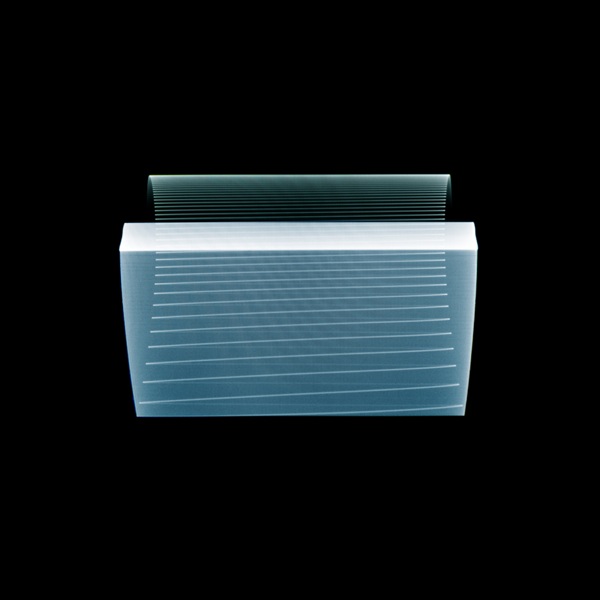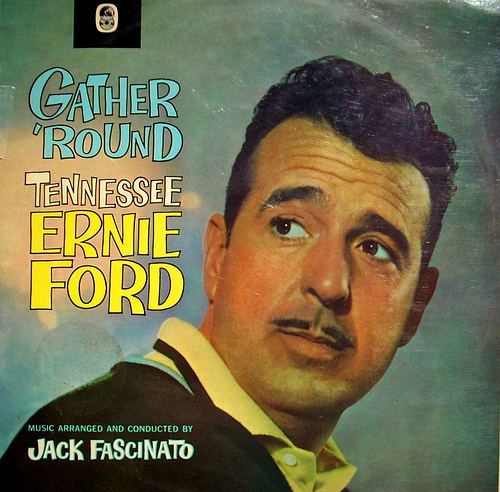The Latest from Boing Boing |  |
- Weimar Rail-Zeppelin: streamlined white-elephant
- Chinese censorware nukes any voicecall that contains the word "protest"
- Daphne Oram's audiovisual music synthesizer, 1957
- Wonder Woman, Amazon Baby Sitter!
- Kraken: a new book about squid
- Are We There Yet?: new art installation at SF Contemporary Jewish Museum
- Remembering Mo Nabbous, "The Face Of Libyan Citizen Journalism"
- Cool World Control Panel for budding evil geniuses
- Harry Potter and the Philosopher's Stone 1st edition sells for $29,875
- SF e-anthology to benefit Christchurch earthquake
- Photos of tube TVs being shut off
- Flurb 11 is out, with extra Mex-spec-fic-cool
- Why Rasputin isn't in the Haunted Mansion
- Mark interviewed on Evernote podcast
- Coffee ad: we're as good as Army mess-hall joe!
- What is up with Tennessee Ernie Ford's expression on this album cover?
- ZENITH: crowdfunded, BitTorrent science fiction thriller
- HOWTO play the opening chord from 'A Hard Day's Night'
- Learn how stir-fry works with this awesome cutaway wok image
- An X Prize for healthcare
- How people really behave during disasters
- Bug-eyed monster steampunk mask
- Cool diagram of a nuclear reactor cooling system
- Boing Boing Live: Japan Quake, 10 days later, with Matt Alt in Tokyo
- Loleatta Holloway, disco and soul vocalist, has died
- Printing nutritional info on an egg with an Eggbot
- Flipback books: shirtpocket format designed for one-handed reading
- CPR Pocket Mask
- Scientist sports jerseys inspired by a Boing Boing comment thread
- Epublishing Bingo card: the traditional media edition
| Weimar Rail-Zeppelin: streamlined white-elephant Posted: 23 Mar 2011 12:33 AM PDT  A Wired/Jalopnik post details the sad history of the Schienenzeppelin, a Weimar-era German "rail zeppelin" that used a giant prop to pull itself down the railroad tracks: Conceived and built in 1930 by the German rail company Deutsche Reichsbahn, the Schienenzeppelin was a design alternative to the streamlined steam locomotives of its day. It was a slick and relatively lightweight at 20 tons, running on but two axles and powered by a 46-liter BMW V-12.Prop-Driven 'Rail Zeppelin' Is Many Kinds of Awesome
|
| Chinese censorware nukes any voicecall that contains the word "protest" Posted: 23 Mar 2011 12:29 AM PDT Censors at the Chinese politburo have ramped up their electronic surveillance and censorship efforts; some piece of spyware is now monitoring all voice communications, and will terminate any phone call in which someone speaks the word "protest" in Mandarin or English (and presumably in other languages): The Chinese firewalls are also blocking VPN connections, degrading Gmail connections, and randomly blocking access to sites from LinkedIn to the Hong Kong Stock Exchange. One analyst quoted in the NYT claims that the politburo is being deliberately ham-fisted in this crackdown in order to convey the message that they are in total control. China Tightens Censorship of Electronic Communications (via Beyond the Beyond) (Image: What's That? (65), a Creative Commons Attribution (2.0) image from jurvetson's photostream)
|
| Daphne Oram's audiovisual music synthesizer, 1957 Posted: 22 Mar 2011 05:49 PM PDT Daphne Oram (1925-2003) was the co-founder and first director of the BBC Radiophonic Workshop, a sound effects and music studio established in the 1950s that had a vast influence on electronic music and synthesizer technology. At the BBC and after, Oram developed an incredible new kind of sound synthesis technology, called Oramics. The video above offers a glimpse of her Oramics synthesizer, purchased from a collector in 2009 and now under restoration at the Science Museum in London. From DaphneOram.org: "Daphne Oram's Oramics Post BBC Synthesizer" (MATRIXSYNTH via @chris_carter_) Daphne Oram: An Electronic Music Pioneer
|
| Wonder Woman, Amazon Baby Sitter! Posted: 22 Mar 2011 05:10 PM PDT  1957 was the highwater mark for entertainment about superheroes who raised young dinosaurs like their own children. |
| Kraken: a new book about squid Posted: 22 Mar 2011 04:59 PM PDT Here's an exclusive excerpt from the nature book, Kraken: The Curious, Exciting, and Slightly Disturbing Science of Squid, by Wendy Williams.
Copyright 2011, Wendy Williams. Reproduced by permission of the publisher, Abrams Image. |
| Are We There Yet?: new art installation at SF Contemporary Jewish Museum Posted: 22 Mar 2011 03:54 PM PDT There's an old Jewish joke in which a man asks a rabbi, ""Why do Jews always answer a question with a question?" The rabbi answers: "Do we?" Following that thread, new media artist/UC Berkeley professor Ken Goldberg and designer Gil Gershoni created a new online and physical installation for San Francisco's Contemporary Jewish Museum titled "Are We There Yet? 5000 Years of Answering Questions with Questions." The installation combines computer vision, machine learning, and a high-end surround sound system to provoke visitors with questions drawing from historical Jewish texts, literature, pop culture, and online submissions from the Are We There Yet? site. From the project description: Are We There Yet?
|
| Remembering Mo Nabbous, "The Face Of Libyan Citizen Journalism" Posted: 22 Mar 2011 03:02 PM PDT On NPR's All Things Considered, Andy Carvin remembers "Mo" Nabbous, a webcaster based in Libya who was killed this weekend while reporting what Moammar Gadhafi's forces were doing to the people of Libya. |
| Cool World Control Panel for budding evil geniuses Posted: 22 Mar 2011 02:25 PM PDT [Video Link] My favorite broad-spectrum enthusiast Steve Lodefink built a "World Control Panel" with his kid. It looks great! |
| Harry Potter and the Philosopher's Stone 1st edition sells for $29,875 Posted: 22 Mar 2011 02:11 PM PDT  I'm not surprised that Action Comics #7 (1938) sold at Heritage Auctions for $143,400, because it's the second time Superman appeared on a comic book cover. I am surprised that the first edition of Harry Potter and the Philosopher's Stone sold for $29,875, because it came out in 1997. Is it really that rare? I'm not surprised that Action Comics #7 (1938) sold at Heritage Auctions for $143,400, because it's the second time Superman appeared on a comic book cover. I am surprised that the first edition of Harry Potter and the Philosopher's Stone sold for $29,875, because it came out in 1997. Is it really that rare? Harry Potter and the Philosopher's Stone 1st edition sells for $29,875 |
| SF e-anthology to benefit Christchurch earthquake Posted: 22 Mar 2011 01:45 PM PDT Discorobot sez, "Tales for Canterbury - a collection of short fiction published to raise money to help those affected by the recent Canterbury Earthquake - is now available for preorder. Edited by NZ writers Cassie Hart and Anna Caro, the anthology is centred round the themes of survival, hope and future. It includes fiction by overseas and local writers, including Jeff Vandermeer, Tina Makereti, Neil Gaiman, Cat Connor and Sean Williams. Available in both ebook and print versions in April." |
| Photos of tube TVs being shut off Posted: 22 Mar 2011 05:15 PM PDT  Berlin-based photographer Stephan Tillmans photographed a number of CRT televisions right as they are switched off. I remember the faux wood-paneled console TV in our living room growing up that I used to turn on and off repeatedly to see the groovy patterns before the image became a tiny dot that felt like it too ages to vanish completely. These lovely photographs, titled "Luminant Point Arrays," give me that same strange, anticipation-fueled feeling of being caught in an oddly-extended interstitial moment of media immersion. Although I wouldn't have put it quite that way when I was 7. From the artist statement: "Luminant Point Arrays" (Thanks, Mathias Crawford!) |
| Flurb 11 is out, with extra Mex-spec-fic-cool Posted: 22 Mar 2011 10:38 PM PDT The new issue of Flurb, Rudy Rucker's magnificent online sf zine, is up. This issue is guest-edited by Eileen Gunn, who has pulled in three excellent Mexican sf writers (their stories are published in both English and Spanish) as well as stories by Leslie What, Chris Nakashima Brown, Charlie Jane Anders, Michael Swanwick and others. It's been a joy having Eileen Gunn guest-edit this issue of Flurb. Eileen is consistently pleasant and intelligent--with an edge. I'm excited about the wonderful stories she came up with for #11. Heartfelt thanks to our excellent authors.A Webzine of Astonishing Tales Issue #11, Spring-Summer, 2011 |
| Why Rasputin isn't in the Haunted Mansion Posted: 22 Mar 2011 01:29 PM PDT Walt Disney vetoed the inclusion of a creepy portrait of Rasputin in early designs for the Haunted Mansion, because he worried that Rasputin's descendants might sue. |
| Mark interviewed on Evernote podcast Posted: 22 Mar 2011 11:58 AM PDT Andrew Sinkov at Evernote interviewed me about the ways I use their terrific store-and-retrieve-anything-from-anywhere service. Mark interviewed on Evernote podcast |
| Coffee ad: we're as good as Army mess-hall joe! Posted: 22 Mar 2011 12:31 AM PDT  This 1919 ad for G. Washington's Coffee advertises that it is every bit as good as the stuff they served to "our boys in the trenches." Appeals to patriotism aside, "as good as they drank on the battlefront" sounds pretty dubious to me. |
| What is up with Tennessee Ernie Ford's expression on this album cover? Posted: 22 Mar 2011 11:22 AM PDT  Yesterday, I knew nothing of Tennessee Ernie Ford. But after spotting this old LP in a thrift store, I now know that he is the master of a certain facial expression, hard to describe in words, but encompassing emotions such as "WTF," "Huh?" and "Christ, not this shit again!" Religious awe is a possible explanation, but I soon figured out the true context: Ernie has clearly just seen his reflection in the mirror after trying out a new artificial tanning lotion. It may be said that these explanations are not necessarily incompatible with one another. This complex and multi-layered expression is now rarely seen in the wild, as it is the intellectual property of Dreamworks and may only be used in animated feature films. Ernie has several other noteworthy facial expressions. Yesterday, I knew nothing of Tennessee Ernie Ford. But after spotting this old LP in a thrift store, I now know that he is the master of a certain facial expression, hard to describe in words, but encompassing emotions such as "WTF," "Huh?" and "Christ, not this shit again!" Religious awe is a possible explanation, but I soon figured out the true context: Ernie has clearly just seen his reflection in the mirror after trying out a new artificial tanning lotion. It may be said that these explanations are not necessarily incompatible with one another. This complex and multi-layered expression is now rarely seen in the wild, as it is the intellectual property of Dreamworks and may only be used in animated feature films. Ernie has several other noteworthy facial expressions.
|
| ZENITH: crowdfunded, BitTorrent science fiction thriller Posted: 22 Mar 2011 11:05 AM PDT VODO -- a creator friendly, copyfighting distribution startup -- has just released part one of ZENITH, a serialized science fiction thriller.Production is already complete, but each segment of ZENITH is released once fans stump up $10,000 -- getting themselves credits in the process. All funds go towards the production of a mini-feature in the Zenith world, released exclusively through VODO. Flavorwire called the film "A visually stunning art-house Blade Runner." It's distributed for free over BitTorrent (and also sold via video on demand services). It's been very popular to date: the first episode was downloaded 250,000 times in the first week, during which time, they raised $3,500. Here's the synopsis: A father and son, separated by decades and a cataclysm that has upturned the world, track a grand and elusive conspiracy in this sci-fi, cyberpunk thriller.Zenith (Thanks, Jamie!) |
| HOWTO play the opening chord from 'A Hard Day's Night' Posted: 22 Mar 2011 10:10 AM PDT Beatles Bible has an intense discussion of how George Harrison (backed by Paul McCartney and John Lennon) played the iconic opening chord from 'A Hard Day's Knight': The 'A Hard Day's Night' opening chord (via Making Light) |
| Learn how stir-fry works with this awesome cutaway wok image Posted: 22 Mar 2011 10:08 AM PDT As a little kid, I loved picture books where buildings and machines were shown in cutaway and everything, from apples to hats, was labeled—think Richard Scary or, more advanced, The Way Things Work. That's why this photo of a wok, taken from the book Modernist Cuisine, immediately caught my eye. The book teaches cooking technique and science with the help of tons of images, just like this. Most taken by Seattle photographer Ryan Matthew Smith. The best part: According to an interview on Serious Eats, this photo was made by simply cutting a wok in half and cooking stuff in it. Serious Eats has a link to enlarge the photo, which will allow you to read the text. There's all sorts of cool information in there about how stir-frying works. |
| Posted: 22 Mar 2011 12:20 PM PDT What if a computer algorithm could predict, based on patient profiles and low-level symptoms, who would need hospital care within the next year? The Heritage Health Prize thinks that just such an algorithm would save both lives and money, and they're starting up a contest aimed at developing it. There's a $3 million prize on the line, as well as $230,000 in progress prizes. |
| How people really behave during disasters Posted: 22 Mar 2011 09:41 AM PDT If you expect a massive earthquake, tsunami, and nuclear crisis to lead to panic in the streets and every-man-for-himself struggles, then you've probably been surprised by the Japanese response to their country's woes. But, before you start waxing philosophical about how different the Japanese are from your home country, consider what's known about how people—people all over the world—actually behave in disasters. Hint: A lot of the stories you've heard about crime and mayhem are either myths, or overblown accounts that don't represent the vast majority. The London Independent's Johann Hari writes for the Huffington Post:
That analysis also fits with Amanda Ripley's 2008 book The Unthinkable: Who Survives When Disaster Strikes. So far, I've only read parts of this book—enough to make me completely rethink a short story I was planning out for my writing club—but it's very high on my list of books I must read in their entirety asap. This seems to be one of those places where "common sense" simply isn't. On the whole, humans respond to disasters more like the Japanese people responded to this one, and less like what we imagine from movies and nightmares. |
| Bug-eyed monster steampunk mask Posted: 22 Mar 2011 12:34 AM PDT  Steampunk fetish mask maker Bob Basset have come up with his most insectile design to date: the mesh-eyed, grille-mouthed BGE Mask. BGE Leather Steampunk Gas Mask. Стимпанк противогаз. |
| Cool diagram of a nuclear reactor cooling system Posted: 22 Mar 2011 09:18 AM PDT  If you're still trying to get your head wrapped around how nuclear reactors like the ones in Fukushima operate, and what went wrong after the Tohoku earthquake, Mother Jones editorial fellow Joe Kloc might be able to help. He's put together a nifty diagram of the cooling system from a GE Mark 1 nuclear reactor—the kind found in 5 of the 6 reactors at Fukushima Daiichi. By coloring in the pipelines he demonstrates how coolant is supposed to flow through the reactor normally, and how it's supposed to flow during various emergency shutdown situations. This version of the diagram shows normal operation.
|
| Boing Boing Live: Japan Quake, 10 days later, with Matt Alt in Tokyo Posted: 22 Mar 2011 09:21 AM PDT [Video Link: Boing Boing Live] Tokyo-based author
BOING BOING LIVE, MARCH 21, 2011: CHAT TRANSCRIPT TweetJin: Talking about mess, you guys should seen my desk last Friday! oheso: My wife's CD collection hit the floor. oheso: My office: not so different. TweetJin: First sign of trouble was loud bang. That was the blinds hitting against the window cos the building had literally tilted TweetJin: Then, jolts and sways...man, that was scary! John: another argument for iTunes King Kernow: I have heard that Mount Fiji has been rumbling .. is there any possibility that it might erupt ? oheso: King, I think someone has been pulling your leg. King Kernow: ok.. phew aokajiya: Fuji's pretty sound asleep. Joli: I don't think so King Kernow: thats good to know oheso: But yes, it's officially not a dead volcano. Joli: And I disagree about Matt & co talking out of thier butts tedm1: who is kid at lower middle of screen? Joli: I live here and I think Matt pretty much nails it in terms of lving in Tokyo oheso: Dean, shout out again! Joli: and staying here during all this crisis peterkvt80: extreme close-up TweetJin: Panic also struck China http://goo.gl/gU0TZ John: there's like 113 "active" volcanoes in Japan. good argument for geothermal power plants bosbesbarb: @ oheso: eriously? no digital back ups or anything? oheso: No matter where you get your energy, if you use lots of it, you're going to have issues. Joli: bingo TweetJin: Matt...rice is now back in Seiyu... oheso: @bos you mean the CDs? We're so 1990s in my fam. gen: oops bosbesbarb: no, got disconnected wah: nyoooo tedm1: crashed here oheso: The thing is Japan is better than most 1st world countries in terms of power conservation. King Kernow: heres a good link showing japan activity.. works best if you fast forward King Kernow: http://www.japanquakemap.com/ aokajiya: Matt & co. were doing the valuable service of comparing coverage from indigenous sources to that from Western sources in a non-sensationalist way. oheso: OK, bell rang. Time for me to get to work. Nice chatting with yall. TweetJin: @oheso: u sure about that? I don't think so. Just take a walk around Shinjuku or Shibuya tedm1: we hear you, just continue oheso: @TweetJin per person, much less than other countries. sep332: skype can't count that high tedm1: ok, working, go gen: back! trufants: yup...I suspect Americans don't deal as well in some ways b/c we as a society feel so entitled and selfish, luckily our wealth sometimes makes up for it oliver: it's the radiation! Dean: Whew, sorry guys! prunella: She's probably on a Mac… Skype sux on a Mac oheso: I don't have the figures at hand, but tweet me at @djfoheso if you want me to look 'em up. trans356: hi TweetJin: Panic buying notwistanding, Japanese people have behaved really well during the crisis oheso: K, I'm out. Dean: Seems to be working now. trufants: are roads and fuel available to get food up to the northern areas? Joli: the Japanese have certainly been reisilient in the face of all this TweetJin: They still lined up patiently Joli: sorry--can't spell! TweetJin: It's a glum today here in Tokyo. Rainy and thick clouds Joli: roads up north on the eastern side are now finally accessible Joli: fuel is more available, but there are still limits in many areas on how much you can buy Joli: anywhere from Y2000 to Y5000 limit tedm1: where is the "affected area" Matt? peterkvt80: So if you eat more seaweed won't that block the radioactive iodine? TweetJin: stores placed limits on bottled water, too. You can only buy 1 bottle of 2L per person tedm1: great question tedm1: frozen wah: :( tedm1: matt, consider ustream please Dean: you may need to pause and restart if it froze Dean: This is no good :( Joli: there's anecdotal evidence that seaweed and other herbs, like holy basil can help block the body's absorption o radiationf gen: "stabilized" is maybe too early to say... TweetJin: ustream can do this? anyway, the stream looks seamless on my system John: that shelf doesn't look secured to the wall like it should be in quake zone Dean: Any questions? TweetJin: Matt! Kichijoji represent!! mallum: yep jeremy: is everyone's video frozen or just mine? karentaylor: Have their been any profiles of the Fukushima 100? Who are they? TweetJin: just ures King Kernow: are the skyscrapers designed to withstand a tsunami Calton: Certain staples still short: haven't seen milk in Tokyo-area stores since last Tuesday. gen: karentaylor: not that I have seen TweetJin: Re Fukushima 100, there's actually about 280 or 300 of them but are rotated on duty at 50 at a time Joli: milk is available first thing in the morning, but sells out quickly TweetJin: Sliced breads are now available too and sometimes last long enough into the evening Dean: any other questions? King Kernow: is there an anti nuclear power feeling in japan now? trufants: are consumers rushing to buy geiger counters etc? TweetJin: What are your impressions of how the Japanese leadership handled the crisis as compared to say how Americans might have handled it? karentaylor: thanks Matt gen: King Kernow: there always was an anti-nuke group in Japan but they were marginalized gen: now, clearly they are not on the margins King Kernow: is it growing now mallum: How frequent/scary are the aftershocks now ? gen: aftershocks slowing TweetJin: Yes, Geiger Counters are selling like hotcakes in Akihabra gen: maybe 1 big one per day; M3 + a few times a day barcelonaguy: There's any scientist in Tokio defending the 'chernobyl option' of burying them all in concrete etc. mallum: gen: compared to many last week ? gen: barcelonaguy: many voices in Tokyo saying many things mallum: many per day gen: fewer per day aokajiya: We trust boingboing. gen: as each day passes mallum: gen TweetJin: I really have to get ready for work mallum: gen: thanks TweetJin: I didn't feel an aftershock yesterday Dean: Thanks for stopping by TweetJin gen: Matt: agreed! bosbesbarb: matt. so agree! Joli: once again--Matt nails it! TweetJin: Bye guys.... Dean: Bye! erb: Question : What is your opinion on Fly-jin? Dean: What's Fly-jin? bosbesbarb: Love the name Dean: Is that a serious question? erb: The foreigner who flew Tokyo en-masse Joli: that's what they're calling foreigners who have left aokajiya: gaijin (foreigners) who 'fly' away Dean: k Calton: Now that's insulting. Joli: yeah--it is CT: I don't think that the journalists knew what a millisievert was before. Calton: I know some people who left, and I can't blame them. aokajiya: Q for Xeni/Matt > how can we get more crowdsourced information into the mainstream media. A boingboing segment on CNN, for example. How would that be curated? erb: It is not a question of insult. Personnaly, I believe they had to deal with lots of pressure. But I want Matt to answer Calton: Some of them did so, based on the ones I know, based on extreme outside pressure from family and friends back home. Joli: for many foreigners it was half-term/spring break, so many families were planning to go away anyway erb: exactly. Still would like Matt's opinion Calton: "Fly-jin" is a godddamned insult. Calton: The cowardice is inherent in the name. Dean: Is this a question I should ask? Joli: I agree with erb--I think it's a question worth asking karentaylor: Isn't it more that 'fly' rhymes with 'gai'? aokajiya: The fly-jin meme is definitely spreading, I'd like to know if it's actually being used on TV/in the media? (Some local want to comment?) trufants: after Katrina, many people left their homes and went to stay w/ relatives far away..why not leave temporarily if you can? It would ease the demand for relief wouldn't it? Calton: One of my best friends took advantage of the French government evacuation due in great part to pressure from parents in the US, relatives in France, and even her (Japanese) husband. Joli: I don't disagree with you, Carlton, but unfortunately it's a product of the human condition to come up with stuff like that when there's a clear split in a group of people barcelonaguy: Question: There are any scientist in Tokio defending the 'chernobyl option' of burying them all in concrete etc. ? jeremy: THe rule of thumb is that after a quake of magnitude M, there are 10 afterhsocks of magnitude 1/10M, 100 of 1/100M, 1000 of 1/1000M, and so forth Calton: Her husband didn't -- couldn't -- leave, but he urged her to go. King Kernow: intrested if anyone here from west USA and is there any increase in shaking going on there at moment? rhenley: No quick fix seen at Japan's nuclear planthttp://www.sfgate.com/cgi-bin/article.cgi?f=/n/a/2011/03/18/financial/f000658D09.DTLIn another setback, the plant's operator said Monday it had just discovere rhenley: that some of the cooling system's key pumps at the complex's troubled Unit 2 are no longer functional _ meaning replacements have to be brought in. mentis: Any indication that rebuilding efforts could generate sufficient jobs to boost Japan's economy? aokajiya: I like "Edaru" -- v. to work overtime w/out sleeping, based on Edano, gov't spokesman karentaylor: yes - Edano was looking pretty beat Joli: I hadn't heard that one--I love it! bosbesbarb: Nice! Calton: I'm staying, but that doesn't make me in any way superior or smarter. aokajiya: 枝だる, is how they're writing it apparently. Calton: It was just my choice and circumstances. Joli: again--I agree with you, Carlton bosbesbarb: eda from edamame, right? Dean: Questions? Dean: If you had one earlier, repeat it please. King Kernow: is any plans to build tokyo sea defences gen: gotta run; catch you all later, I'm @gen Dean: Later gen aokajiya: cya, gen Joli: will rebuilding help boost the economy mentis: Yes: Any indication that rebuilding efforts could generate sufficient jobs to boost Japan's economy? Dean: Good one. mentis: Thanks ^_^. jeremy: Is there anything, short of the onset of unhealthy radiation in Tokyo, that would make you re-evaluate your decision to stay? Fred McDonald: I'm wanting to return to see friends this year or next, what do you think the employment market is going to look like? jeremy: Because at the point at which there is unhealthy radiation in Tokyo, it would be difficult to leave Fred McDonald: Also looking forward to next Otakuverse Zero Joli: and yes--the same kanji for edamame bobk: OUr exchange student is scheduled to return to Sendai in two weeks...any advice? Fred McDonald: Next year or two mallum: due to visit Tokyo in 4 weeks.. bosbesbarb: I'll be going to Tokyo in three weeks, from Amsterdam. Empty suitcase to fill. Anything I can bring? MayaCecile: Me too, Mallum. aokajiya: wow re: exchange student. have they been in contact with any relatives? mallum: MayaCecile: do you still plan on going ? or gonna wait and see ? Joli: there was talk of a "donate a bag" program for travellers to pack a bag and donate it upon arrival bobk: yes, family is able to stay in their house. Waitng inlines for food and eater. Conservinggas by biking. Sounds "safe" considering, but still.... MayaCecile: Still planning on it for now, but waiting it out as long as possible before we can't cancel our tickets... Joli: from what I've been hearing, things like toothbrushes and extension cords are needed--sounds weird, I know Joli: great job, guys! mallum: MayaCecile: same here caven: amen to that trufants: good webcast, thanks bosbesbarb: yep King Kernow: thanks dean..nice end credits Joli: thanks & bye! @joliinjapan King Kernow: hahaha karentaylor: thanks - see ya all later mallum: MayaCecile: I hope we make it. aokajiya: thanks, matt, xeni & techdude peterkvt80: great stuff RubenHaan: thanx . geat webcast MayaCecile: mallum: Fingers crossed for us! arc: I don't mean to make light of what happened, but I'm looking forward to what Japan's gonna do next with energy technology. Calton: Good job. Thanks. MayaCecile: Great webcast, guys. Thank you for putting this on! King Kernow: great web cast tho... thanks for orchestrating it Joli: if there's an url for the recorded webcast please let me know as I would like to tweet it mallum: yeah very cool, thanks folks |
| Loleatta Holloway, disco and soul vocalist, has died Posted: 22 Mar 2011 08:46 AM PDT [Video Link] The great soul, disco, and house music vocalist Loleatta Holloway has died. She was 64 years old. Early reports of her passing, and notes about her long and prolific career: Spinning Soul, Prefix Mag. She recorded many great songs, but the candid 1987 a capella spoken word recording embedded above, which she did not consent to, and which was released under shady conditions and re-used by others for profit without benefit for her— is one of my favorite Loleatta recordings. It captures her spirit, and the spirit of the time and place in which she reigned, so perfectly. Listen to it now, and tell me she's not telling us the truth. |
| Printing nutritional info on an egg with an Eggbot Posted: 22 Mar 2011 12:38 AM PDT  Thingiverse member Dnewman has produced some nutritional templates for Eggbot owners (Eggbots are devices designed to print on eggs, ping-pong balls, grapefruit, etc). Clever! Dnewman's solution is beyond elegant. Why not just print the nutritional information right on the produce using an Eggbot?? I just LOVE this idea! I would absolutely buy eggs from any producer that did this. Not only is this idea so so so cool, but it opens the door to all kinds of other food labeling robots. I mean, who wouldn't want a Mangobot 2000? Oh, and if you're going to buy an apple, pear, or other fruit or vegetable where the exterior is consumed, why not just print with an edible ink? 12Truth in Labeling |
| Flipback books: shirtpocket format designed for one-handed reading Posted: 22 Mar 2011 08:13 AM PDT The Dutch publishing industry's "flipback" format sounds clever: it's a sideways-bound book with a lie-flat binding, printed on onionskin, sized to fit in a shirt pocket and optimized for easy one-handed reading. More than a million have been sold in the Netherlands and now it's to be introduced in the UK, France and Spain. It sounds like a handy format, though "Could this new book kill the Kindle?" probably takes the prize for silliest Guardian headline of the year to date. Could this new book kill the Kindle? (via MeFi) |
| Posted: 22 Mar 2011 09:59 AM PDT  This CPR pocket mask is a great addition to any first aid kit. After becoming an EMT last year I learned the importance of maintaining A. the airway, and B. body substance isolation, and this collapsible mask goes a long way in achieving both. The soft plastic bubble that lines the mask creates a great airtight seal when fitted over the mouth of the patient ensuring effective oxygen delivery. In addition, the two way valve minimizes the rescuer's exposure to any bodily fluids or vomitus that could result from providing rescue breaths. The mask itself is standard equipment in trauma bags, and the oxygen port can be used to attach an Ambu bag or oxygen line. [UPDATE Note: Commenters over at Cool Tools pointed out that changes are being made in regards to rescue breaths and CPR and that it is important to stay up-to-date in your training. Despite the changes this mask remains useful in many other situations including CPR.-- OH] -- Oliver Hulland CPR Pocket Resuscitator $7 Don't forget to comment over at Cool Tools. And remember to submit a tool! This CPR pocket mask is a great addition to any first aid kit. After becoming an EMT last year I learned the importance of maintaining A. the airway, and B. body substance isolation, and this collapsible mask goes a long way in achieving both. The soft plastic bubble that lines the mask creates a great airtight seal when fitted over the mouth of the patient ensuring effective oxygen delivery. In addition, the two way valve minimizes the rescuer's exposure to any bodily fluids or vomitus that could result from providing rescue breaths. The mask itself is standard equipment in trauma bags, and the oxygen port can be used to attach an Ambu bag or oxygen line. [UPDATE Note: Commenters over at Cool Tools pointed out that changes are being made in regards to rescue breaths and CPR and that it is important to stay up-to-date in your training. Despite the changes this mask remains useful in many other situations including CPR.-- OH] -- Oliver Hulland CPR Pocket Resuscitator $7 Don't forget to comment over at Cool Tools. And remember to submit a tool! |
| Scientist sports jerseys inspired by a Boing Boing comment thread Posted: 21 Mar 2011 11:44 PM PDT  Syphax sez, "A while back, I mentioned my idea to put scientists' names on the back of sports jerseys (see the comments for this Boing Boing post). I was sitting on the idea until one of my sons asked for a Galileo shirt for his birthday! So, I printed some up for him and his brothers. I would have liked to use a more authentic jersey, but went with a basic T-shirt (in Azzurri blue) for starters. Does anyone else want one of these? For which scientist/inventor?" Science Jerseys (Thanks, Syphax, via Submitterator!) |
| Epublishing Bingo card: the traditional media edition Posted: 21 Mar 2011 11:39 PM PDT  Shmuel510 thought that John Scalzi's epublishing Bingo card was a little one-sided in briefing for the publishing side of the equation; he's produced the Bingo card you can use when you're arguing wiht people from the traditional publishing world. The Traditional Publishing Bingo Card |
| You are subscribed to email updates from Boing Boing To stop receiving these emails, you may unsubscribe now. | Email delivery powered by Google |
| Google Inc., 20 West Kinzie, Chicago IL USA 60610 | |

 A Beijing entrepreneur, discussing restaurant choices with his fiancée over their cellphones last week, quoted Queen Gertrude's response to Hamlet: "The lady doth protest too much, methinks." The second time he said the word "protest," her phone cut off.
A Beijing entrepreneur, discussing restaurant choices with his fiancée over their cellphones last week, quoted Queen Gertrude's response to Hamlet: "The lady doth protest too much, methinks." The second time he said the word "protest," her phone cut off.  Not only is this one of the earliest forms of electronic sound synthesis, it is noteworthy for being audiovisual in nature - i.e. the composer draws onto a synchronised set of ten 35mm film strips which overlay a series of photo-electric cells, generating electrical charges to control amplitude, timbre, frequency, and duration. This system was a key part of early BBC Radiophonic Workshop practice. However, after Daphne left the BBC (in 1959), her research, including Oramics, continued in relative secrecy.
Not only is this one of the earliest forms of electronic sound synthesis, it is noteworthy for being audiovisual in nature - i.e. the composer draws onto a synchronised set of ten 35mm film strips which overlay a series of photo-electric cells, generating electrical charges to control amplitude, timbre, frequency, and duration. This system was a key part of early BBC Radiophonic Workshop practice. However, after Daphne left the BBC (in 1959), her research, including Oramics, continued in relative secrecy. 
 As they enter, visitors encounter a voice asking a question such as: "Can we talk?" After a pause, other questions emerge: "Do you love me?" or "Is that all there is?" As visitors move farther into the space, the questions become increasingly contemplative. "How big is the step between believing and knowing?" or "If not now, when?" The questions begin to take on new contexts and meanings. Visitors realize that they create their own experiences as they move through space.
As they enter, visitors encounter a voice asking a question such as: "Can we talk?" After a pause, other questions emerge: "Do you love me?" or "Is that all there is?" As visitors move farther into the space, the questions become increasingly contemplative. "How big is the step between believing and knowing?" or "If not now, when?" The questions begin to take on new contexts and meanings. Visitors realize that they create their own experiences as they move through space.  The television picture breaks down and creates a structure of light. The pictures refuse external reference and broach the issue of the difference between abstraction and concretion in photography. The breakdown of the television picture discribes the breakdown of the reference. The product is self-referential photography.
The television picture breaks down and creates a structure of light. The pictures refuse external reference and broach the issue of the difference between abstraction and concretion in photography. The breakdown of the television picture discribes the breakdown of the reference. The product is self-referential photography. In this episode, we talk about the recent updates to iPhone and Android, and our experiments with video Q&As using Vyou.com. Also, we have a very special interview with Mark Frauenfelder of BoingBoing and Make Magazine.
In this episode, we talk about the recent updates to iPhone and Android, and our experiments with video Q&As using Vyou.com. Also, we have a very special interview with Mark Frauenfelder of BoingBoing and Make Magazine. 




 The fingering, as played by Harrison on his 12-string Rickenbacker 360/12 guitar, was as follows:
The fingering, as played by Harrison on his 12-string Rickenbacker 360/12 guitar, was as follows: 
 It is all the rage in Holland, where it was introduced in 2009, and has since sold 1m copies. A version has just been launched in Spain, France is next, and the flipback reaches UK shores in June, when Hodder & Stoughton will treat us to a selection of 12 books. They cost £9.99, and will include David Mitchell's Cloud Atlas and Stephen King's Misery.
It is all the rage in Holland, where it was introduced in 2009, and has since sold 1m copies. A version has just been launched in Spain, France is next, and the flipback reaches UK shores in June, when Hodder & Stoughton will treat us to a selection of 12 books. They cost £9.99, and will include David Mitchell's Cloud Atlas and Stephen King's Misery.
No comments:
Post a Comment